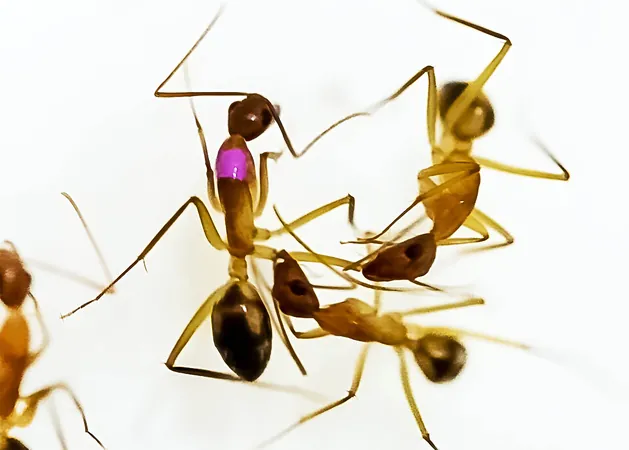
Ants: The Unlikely Surgeons of the Insect World!
2025-04-13
Author: Jia
Surprising Surgeons: Ants and Their Medical Marvels
While we often view life-saving interventions as an exclusively human trait, groundbreaking research reveals that certain ants may also engage in their own form of medical care. A fascinating study published in the journal Current Biology uncovers how Florida carpenter ants, known scientifically as Camponotus floridanus, manage severe injuries among their nestmates.
Amputation: Ants' Secret Life-Saving Technique
In the world of these industrious insects, a leg injury isn’t just a setback; it may require surgical intervention—specifically amputation or thorough cleaning. This remarkable finding underscores the ants' ability to make life-or-death decisions based on the condition of the wound. Researcher Erik Frank from the University of Würzburg notes that the treatment decisions hinge on infection risk and the integrity of the muscle tissue in the injured area.
An intriguing characteristic of these ants is their methodical approach to injuries. Observations reveal they adapt treatment based on the specific type of wound, showcasing a level of sophistication unique in the animal kingdom.
Mastering Medical Procedures
In cases where the injury is to the femur, these ants meticulously clean the wound before opting to amputate, achieving an impressive survival rate of around 90-95%. However, for tibia injuries, they prioritize cleaning and still manage a respectable survival rate of about 75%. This disparity highlights their instinctual intelligence and the significance of leg anatomy in their treatment strategy.
The Incredible Life of Florida Carpenter Ants
Camponotus floridanus thrives in Florida’s warm climate, easily identifiable by their reddish-brown bodies. Unlike other carpenter ants that carve their own homes, these ants prefer to inhabit ready-made cavities like tree hollows. They are sociable creatures, often spotted foraging in groups as they seek out food.
What makes these ants particularly fascinating is their complex social structure and elaborate communication methods. By releasing pheromones, they streamline activities from foraging to defense, showcasing teamwork in a colony that can include thousands of individuals.
An Ant’s Medical System: Nature’s Own
The findings about ant medic behavior prompt deeper exploration into how an insect society develops such organized responses to injuries. Frank suggests their ability to diagnose and treat wounds resembles a rudimentary medical system, rivaling our human healthcare.
Intriguingly, these procedures seem instinctive rather than learned. It appears that the ants possess an inherent skill set that emerges as they age, enabling them to perform medical interventions as needed.
What Lies Ahead for Ant Medical Research?
Scientists continue to investigate whether similar surgical techniques are common in other Camponotus species lacking antimicrobial glands. This curiosity raises questions about the nature of cooperative behavior and pain perception in these remarkable creatures.
Each observation, from the voluntary amputation of a limb to collaborative cleaning, highlights the extraordinary capabilities of ant societies. Understanding these interactions may offer valuable insights not just into the world of ants, but the broader scope of insect behavior.
This remarkable research suggests a hidden world of intricate social mechanics in nature, urging us to redefine what we consider unique to humans.


 Brasil (PT)
Brasil (PT)
 Canada (EN)
Canada (EN)
 Chile (ES)
Chile (ES)
 Česko (CS)
Česko (CS)
 대한민국 (KO)
대한민국 (KO)
 España (ES)
España (ES)
 France (FR)
France (FR)
 Hong Kong (EN)
Hong Kong (EN)
 Italia (IT)
Italia (IT)
 日本 (JA)
日本 (JA)
 Magyarország (HU)
Magyarország (HU)
 Norge (NO)
Norge (NO)
 Polska (PL)
Polska (PL)
 Schweiz (DE)
Schweiz (DE)
 Singapore (EN)
Singapore (EN)
 Sverige (SV)
Sverige (SV)
 Suomi (FI)
Suomi (FI)
 Türkiye (TR)
Türkiye (TR)
 الإمارات العربية المتحدة (AR)
الإمارات العربية المتحدة (AR)